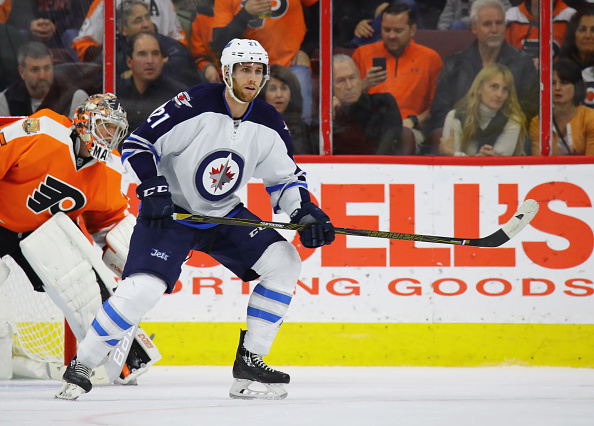Player development seems to always result in more questions than answers. How likely is it for a top pick to pan out? What makes a player a “steal”? Last Word On Hockey has a new series on how to properly develop prospects from all different spots throughout the draft. This week’s piece involves draft picks in the back half of the first round and how they were used early in their careers.
NHL Player Development Of First-Round Picks
In the span of 2005 through 2015, there were 84 total selections made between 16th overall and 30th overall on forwards playing in North America. Looking at all 84 forwards, they were split into different categories. Those categories were “Forwards Deemed NHL-Ready and Brought In Immediately When Ready,” “Forwards Near NHL-Ready and Brought In Immediately When Near-Ready,” “Forwards Rushed Slightly,” “Forwards Rushed,” “Forwards Forced,” “A Little Patience,” “Patience,” and “Too Much Patience.”
There were 12 forwards who fell into the fourth category, “rushed,” on the list. Of those 12 players, seven made their NHL impacts in their DY+3 season. Those players are Michael McCarron, Brock Boeser, Colin White, Tyler Ennis, Chris Stewart, Quinton Howden, and Josh Ho-Sang. In this piece, we look at Quinton Howden.
In this piece, we will be using stats from Elite Prospects (raw stats) and Hockey Reference (ice time). Additionally, the analytics we are using are as follows: even-strength offence goals above replacement (EVO), even-strength defence goals above replacement (EVD), wins above replacement (WAR) and goals above replacement (GAR). Those analytics are from Evolving Hockey (subscription required).
NHL Player Development Of Quinton Howden
Quinton Howden, drafted 25th overall in the 2010 NHL draft by the Florida Panthers, came out of the Moose Jaw Warriors organization of the WHL. In his DY-1 season, he scored 13 goals and 17 assists for 30 points in 62 games, for 0.484 points per game. That ranked 66th out of the 84 forwards in DY-1 production. The following year, he scored 28 goals and 37 assists for 65 points in 65 games, for exactly one point per game. That ranked 60th out of the same 84 forwards in DY production. Following his selection in the draft, Howden would play two more seasons in the WHL before making his full jump to professional hockey.
In his DY+1 season with the Warriors, Howden scored 40 goals and 39 assists for 79 points in 60 games, for 1.317 points per game. That ranked 23rd out of the 82 forwards still outside the NHL in DY+1 production. The following year with the Warriors, he scored 30 goals and 35 assists for 65 points in 52 games, for 1.25 points per game. That ranked 16th out of the 70 forwards still outside of the NHL in DY+2 production. The next season, Howden would get his professional hockey opportunity.
How Quinton Howden Was Used
In his first professional season, Howden would split between the AHL and NHL. In the AHL, he scored 13 goals and 17 assists for 30 points in 57 games. At the NHL level, he would play just 18 games and average 10:27 per game. In that role, he didn’t score a single point. Analytically, he would prove to be effective in one area, defensively, with an EVD of 0.8. However, every other metric was below replacement level. His EVO (-1.9) was awful, and it led to his WAR (-0.1) and GAR (-0.6) to fall below the replacement level threshold.
After an abysmal first season, Howden would see less games in his second season at the NHL level. At the AHL level, he played 59 games and scored 10 goals and 17 assists for 27 points. Then, at the NHL level, Howden would play just 16 games and average 13:43 per game. While playing less games, his role increased in terms of ice time, which allowed him to produce four goals and six points. However, his analytics would remain the same. His EVO (0.1) would be much-improved, but his EVD (-0.9) dipped, bringing down the rest of his metrics. His WAR (-0.2) and GAR (-0.9) both got worse with his defensive metrics. Howden simply could not translate his offensive game to the next level.
No NHL Season In Year Three
After back-to-back awful seasons to start his career, Howden would play exclusively at the AHL level. In 33 games with the Panthers AHL affiliates, the San Antonio Rampage, Howden would score three goals and 15 assists for 18 points. Now, he did face injuries at the start of his third season, which forced him to miss some time. But his production has dipped year-over-year, starting back in his DY+2 season. Howden’s production went down from DY+1 to DY+2, then his production dropped again from his first AHL season to his second and then his third.
Following his third professional season in 2014-15, Howden would see two more seasons in North America. He played one more year with the Panthers, scoring 11 points in 58 NHL games. Howden then left the Panthers in free agency following that season, joining the Winnipeg Jets in 2015-16. That year, he saw just five NHL games, and didn’t score a single point. Being demoted to the AHL once again, he scored 13 goals and 11 assists for 24 points in 58 games. Howden would leave for Europe, where he played in the KHL for three seasons, with four teams.
Where Quinton Howden Ended Up
In the KHL, he recorded 40 goals and 40 assists for 80 points in 169 games. He would leave the KHL and join the SHL for one year, scoring three assists in 11 games in 2020-21. Finally, this past season, he played in the DEL (Germany) and scored 18 points in 45 games. His production in Europe has similarly dipped with each passing year. Howden’s NHL player development could not have gone better. He simply was not able to translate his abilities. There is nothing the Panthers realistically could have done differently.
Junior league stats via Elite Prospects, NHL stats via Hockey Reference, NHL analytics via Evolving Hockey
Main photo:






